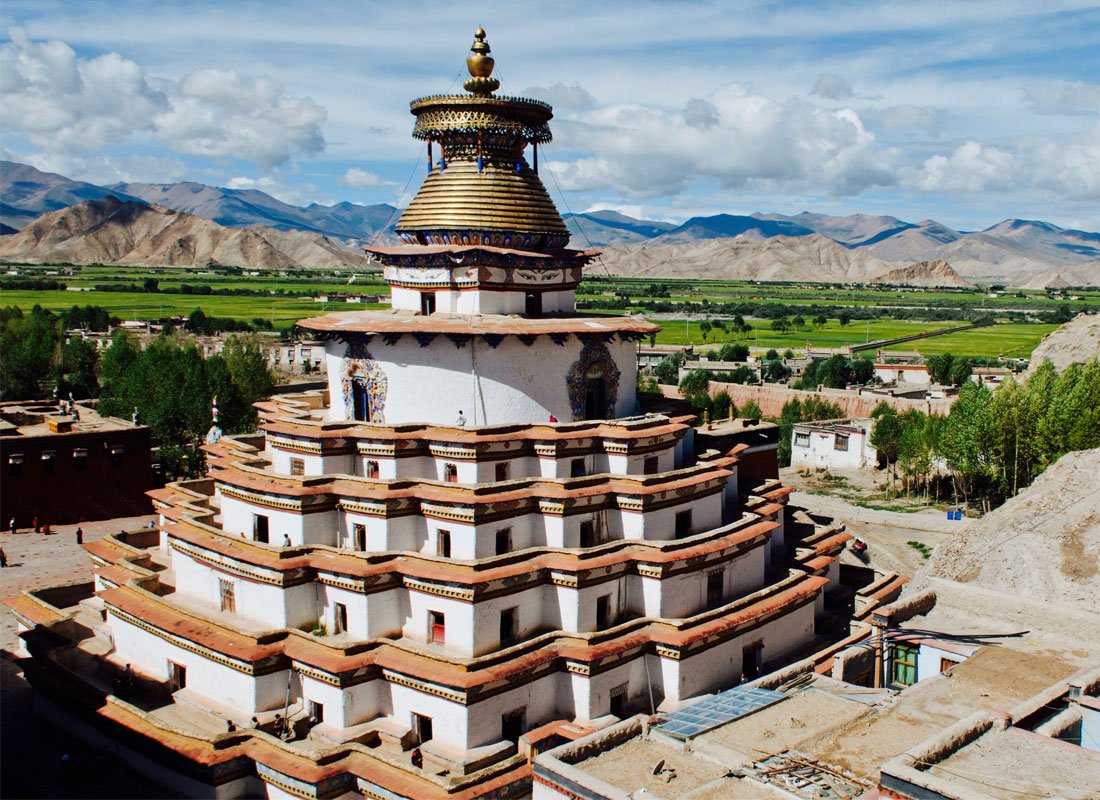Cultural Heart Of Tibet: Xining To Central Tibet Culture Tour

Executive Summary

This comprehensive tour delves into the cultural heartland of Tibet, traversing the ancient Silk Road from Xining to Central Tibet. Participants will immerse themselves in the distinct Tibetan Buddhist traditions, explore ancient monasteries, interact with local communities, and marvel at the breathtaking Tibetan landscapes.

Introduction
Embark on a captivating journey to the cultural heart of Tibet, a land of awe-inspiring mountains, ancient monasteries, and vibrant spirituality. Our carefully curated itinerary traces the historic Silk Road, leading you from the bustling city of Xining to the spiritual center of Lhasa. Prepare to be mesmerized by the rich Tibetan culture, where tradition and modernity harmoniously coexist.
Top 5 Subtopics
Tibetan Buddhism
- Origins and Beliefs: Tibetan Buddhism emerged in the 7th century, influenced by Indian Mahayana Buddhism and indigenous Bon traditions.
- Sects and Lineages: Four primary sects – Nyingma, Kagyu, Sakya, and Gelug – have evolved over centuries, each with its unique teachings and practices.
- Monasteries and Lamas: Monasteries serve as centers of religious study, meditation, and community life. Lamas, ordained monks, guide spiritual practices and teachings.
- Rituals and Festivals: Tibetan Buddhism is renowned for its elaborate rituals and festivals, such as the Cham dance and Losar New Year celebrations.
- Influence on Tibetan Society: Buddhism deeply influences Tibetan culture, shaping values, customs, and art forms.
Ancient Monasteries
- Jokhang Temple, Lhasa: This sacred temple is the spiritual heart of Tibet, housing the Jowo Shakyamuni statue, believed to be the most revered Buddha image.
- Potala Palace, Lhasa: A UNESCO World Heritage site, this colossal fortress was the former residence of the Dalai Lama, serving as both a palace and a monastery.
- Sera Monastery, Lhasa: One of the “Great Three” Gelug monasteries, Sera is famed for its daily monastic debates and traditional architecture.
- Drepung Monastery, Lhasa: Another of the “Great Three,” Drepung is known for its vast size and historical significance as the largest monastery in Tibet.
- Tashilhunpo Monastery, Shigatse: This important monastery is the traditional seat of the Panchen Lama, the second-highest ranking lama in Tibetan Buddhism.
Local Tibetan Culture
- Tibetan Nomads: In rural areas, nomadic herders continue traditional lifestyles, grazing their yaks and sheep on vast grasslands.
- Artisan Crafts: Tibetan artisans excel in creating exquisite carpets, jewelry, thangkas (religious paintings), and other handicrafts.
- Music and Dance: Traditional Tibetan music and dance are characterized by haunting melodies and colorful costumes.
- Food and Hospitality: Tibetan cuisine features unique flavors and ingredients such as yak butter tea, momos (dumplings), and tsampa (roasted barley flour).
- Respect for Nature: Tibetans hold a deep reverence for the natural environment, reflected in their spiritual practices and customs.
Tibetan Landscapes
- Himalayas and Tibetan Plateau: Tibet boasts some of the highest mountain peaks and the most extensive plateau on Earth.
- Lakes and Glaciers: Pristine lakes, such as Namtso and Yamdrok Tso, reflect the majestic mountains and glaciers.
- Vast Grasslands: The Tibetan Plateau is home to vast grasslands supporting nomadic herding communities.
- Unique Flora and Fauna: Tibet’s high altitude and rugged terrain support a distinctive range of plant and animal species.
- UNESCO World Heritage Sites: Several natural and cultural sites in Tibet have been recognized as UNESCO World Heritage sites.
Silk Road
- Historical Significance: The Silk Road was a network of trade routes connecting China with Central Asia, the Middle East, and Europe.
- Xining, Starting Point: Xining was a crucial starting point on the Silk Road, facilitating trade and cultural exchange between Tibet and the East.
- Tea-Horse Road: A branch of the Silk Road, the Tea-Horse Road connected Tibet with Yunnan Province in China, fostering trade and cultural exchange.
- Religious Exchange: The Silk Road facilitated the spread of Buddhism and other religious ideas between Tibet and neighboring regions.
- Contemporary Relevance: The Silk Road continues to be an important economic and cultural corridor connecting Asia today.
Conclusion
A journey to Central Tibet promises an unforgettable immersion into a world of ancient traditions, stunning natural beauty, and profound spirituality. As you traverse the Silk Road and interact with the local Tibetan communities, you will gain invaluable insights into the cultural heart of Tibet. From the sacred monasteries to the vibrant landscapes, this tour will leave an enduring mark on your mind and spirit.
Keyword Phrase Tags
- Tibetan Buddhism
- Ancient Monasteries
- Local Tibetan Culture
- Tibetan Landscapes
- Silk Road